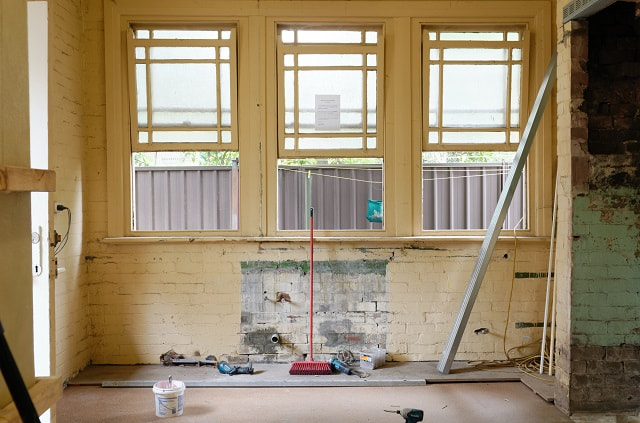Renovating your home is an exciting yet a challenging project. It provides an opportunity to infuse new life into your living space while boosting your property value. However, it is also filled with pitfalls that could lead to disappointing results or costly repairs later.
It is especially true in a region as diverse as Long Island, where the wide variety of architectural styles requires a thoughtful and informed approach to renovation. To successfully navigate this intricate process, one must be aware of some prominent and common mistakes and learn how to avoid them. Today, we will discuss several key areas where errors frequently occur during home renovations. So, without further ado let’s explore nine home renovation mistakes you should avoid:
Choosing Inexpensive Over Quality Materials
While planning a home renovation, particularly in an area as upscale as Long Island, where renovation costs may start from around $150 per sqft, it can be tempting to skimp on the quality of materials to save on costs.
However, this is a common pitfall, often resulting in expensive repairs. For example, skimping on the quality of materials for your plumbing can save you some money initially but could lead to frequent leaks or burst pipes in the long run. Investing in a quality Long Island plumbing solution will ensure longevity and durability. This principle applies to all aspects of your renovation. By selecting high-quality materials, you make a long-term investment, ensuring your renovations stand the test of time and add value to your home.
Ignoring the Natural Style of Your Home
Every home has a unique architectural style that forms an intrinsic part of its charm. Ignoring this factor during a renovation can lead to a disorganized and jarring appearance. For instance, a classic Cape Cod house might lose its quaint appeal if renovated with ultra-modern elements. Rather than drastically altering the inherent style of your home, aim to enhance it with contemporary conveniences and updated aesthetics.
For example, if you have a historic Tudor-style home in Long Island, consider integrating modern amenities while maintaining the property’s old-world charm. By respecting the architectural integrity of your house, you not only retain its character but also contribute to preserving the diverse architectural landscape of your area.
Skimping on Proper Measurement
Accurate measurements form the cornerstone of any successful renovation project. Whether ordering furniture, installing a new kitchen countertop, or retiling your bathroom, double-checking all measurements is necessary.
Any errors can result in expensive reorders or, even worse, an ill-fitting final product that detracts from the beauty of your renovated space. When ordering materials, also consider any wastage that might occur during cutting or installation. For instance, an extra 10% of flooring or tiling might be required to accommodate these factors.
Overestimating DIY Abilities
In the era of DIY home improvement and access to tons of free tutorials on YouTube, handling all aspects of your renovation by yourself can be tempting. While this might work for tasks like painting walls or laying a simple laminate floor, other electrical work, roofing, or advanced plumbing jobs should be left to professionals.
Errors in these areas can lead to serious safety risks or may cause major damage to your home, resulting in much higher costs in the long run. Hiring experienced professionals will ensure that these critical aspects of your renovation are handled with the expertise they deserve.
Neglecting Proper Space Planning
Proper space planning is an essential aspect of any renovation project. It involves strategically arranging spaces and elements in your home to optimize functionality, aesthetics, and flow. Without this, you end up with an impractical layout or overcrowded spaces that undermine the potential of your renovation. Seek professional advice and consider factors like natural light, usage patterns, and furniture size when planning your spaces.
Following Trends Over Timelessness
While it’s tempting to incorporate the latest home decor trends into your renovation, remember that not all trends stand the test of time. Consider shag carpeting or avocado-colored appliances that were once all the rage but now seem dated. Opt for timeless design elements for significant aspects of your renovation, like flooring, cabinetry, or architectural details. Use trends sparingly and for features that can be easily updated, like paint colors or accessories.
Making Poor Choices with Architectural Elements
Windows, doors, and flooring are key architectural elements that contribute significantly to the aesthetics and functionality of your home. Making the wrong choices here can be costly and negatively impact your renovation results.
When selecting windows, consider design, natural light, and energy efficiency. Door choices should take into account style, function, and durability. Flooring selections should be based on the specific needs of different areas within your home. For example, hardwood flooring may be perfect for living and dining areas, while tiles could be more suitable for bathrooms or utility areas.
Misjudging the Scale of Renovation
Understanding the true scale of your renovation project can save you from many headaches down the line. For example, if you’re renovating a bathroom, it’s not just about picking tiles and fixtures. It also involves considering the plumbing and electrical work, structural changes, and local building codes.
Misjudging the scale of your renovation can result in significant unexpected work and costs, not to mention stress. Consult with professionals who can help you assess the scope of your renovation properly, ensuring you’re fully prepared for what lies ahead.
Ignoring Future Needs and Lifestyle Changes
A successful home renovation caters to your present needs and anticipates future lifestyle changes. Perhaps you’re planning to start a family, or you may need a home office in the future. Maybe you plan to age in place and require more accessible features in your home.
Ignoring these potential future needs during your renovation could result in your home not meeting your lifestyle demands. A forward-thinking approach to your renovation planning can help ensure your home continues to serve you well in the years to come.
Conclusion
Renovating your home is a significant project that can enhance your living space and increase the value of your property. However, it’s a journey laden with potential pitfalls. You can steer your renovation project toward success by being aware of these common renovation mistakes and learning how to avoid them. While it’s tempting to rush into changes, careful planning and thoughtful decision-making are key to a successful renovation. So take the time to understand your home’s inherent style, choose quality materials, plan your spaces effectively, and anticipate future needs. With these insights, you’re better equipped to renovate your home that’s not only beautiful and functional but also truly stands the test of time.








